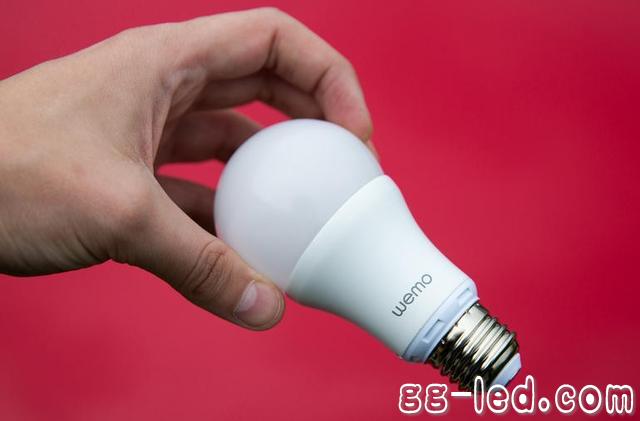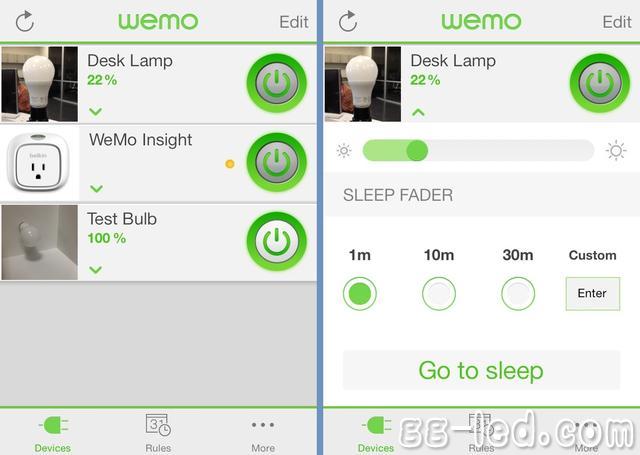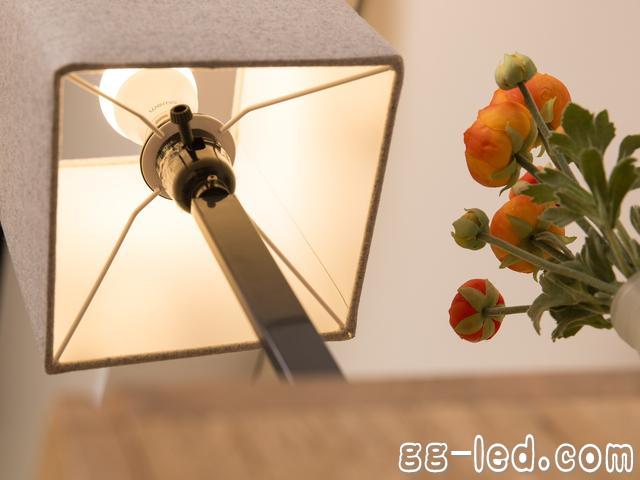According to previous reports, Belkin released the WeMo smart LED lights at CES 2014 held earlier this year. It was planned to be launched in the second quarter of this year. After a few months of jump tickets, WeMo smart LED lights were finally officially launched. It is reported that WeMo double lamp set is priced at 100 US dollars (about 614 yuan), on this basis, each additional purchase of a lamp costs 30 US dollars (about 184 yuan), which is cheaper than the price announced at the beginning of the year. Quite a lot.

At present, the main rivals of WeMo Smart LEDs are Hue Lux LEDs from Philips and TCP Smart LEDs sold only in the US. It seems that WeMo is still difficult to stand out from the crowd. Despite this, WeMo Smart LEDs still have a lot to be commended, especially for those who have already purchased the WeMo series, this smart LED is really a good fit. Let's take a look at the detailed evaluation of WeMo Smart LEDs!
WeMo smart LEDs are not much different in appearance from general LED lights. The A19 bulb shape and milky white lampshade look very classic, no matter what kind of fixtures are installed, they will not look different. The normal operation of WeMo Smart LEDs relies on a matching WeMo Link data relay. WeMo Link uses a straight-in design that is slightly larger than a typical mobile phone charger, and it can receive Wi-Fi control data and transmit it to the bulb via the ZigBee standard, which is also used on Philips Hue and Hue Lux.
It is worth mentioning that the data relays of Hue and Hue Lux need to be directly connected to the home router through the Ethernet port, which makes the data lines that are already very messy more difficult to manage, and the solution of WeMo intelligent LEDs is compared. The way is obviously more reasonable, users can plug WeMo Link into any place they want to insert.
WeMo is not very difficult to get started. After everything is ready, WeMo will first remind you of the connection with green and orange lights, then all you have to do is take out the smartphone, connect to the WeMo Link wireless network and open the WeMo app. The system will automatically detect the smart light bulb connected to the network, and then you can switch back to the home network. Not only that, but WeMo Smart LEDs also support the use of WeMo Light Switch and WeMo Switch+Motion. We can use the WeMo application to set various custom rules, such as turning on the lights when WeMo Motion detects motion.

In terms of parameters, WeMo Smart LEDs have a power of 9.5 watts and a brightness of 800 lumens, which is more energy efficient than comparable products. Hue Lux LED and TCP smart LEDs have a color temperature of around 2700K, while WeMo has a color temperature of 3000K, which is relatively warmer. In addition, the brightness of the WeMo Smart LEDs can be adjusted with the WeMo application, with a total of 100 levels, the brightness conversion is fairly smooth and no flickering occurs. But you need to remind everyone that if you use the app to adjust the brightness, you should not adjust the physical brightness control knob on the wall, otherwise it will cause the brightness to keep changing. When the WeMo smart LED is adjusted to a minimum of 1% brightness, its actual brightness is about 4% of the maximum brightness. Although there is no problem in most cases, the minimum brightness of Hue Lux LEDs and TCP Smart LEDs is lower.
WeMo Smart LEDs perform satisfactorily in color rendering, with an average color rendering of 88 points, which is enough to bring a variety of color effects to your living room, while Hue Lux LEDs and TCP Smart LEDs score around 80 points. However, for this level of LED, rendering red is a bit difficult.
The reason why smart bulbs sell at a higher price is largely due to the word "smart", and WeMo smart LEDs naturally won't let lazy people down. In the WeMo app, you can not only manually set the timed on function, but also let it wake you up according to the daily sunrise time. At the same time, WeMo Smart LEDs also have a dimming mode in minutes and hours to help you generate drowsiness, which is also missing from TCP Smart LEDs.
Not only that, but the WeMo Smart LED and the Hue Lux LED support IFTTT. Simply put, the Internet-based IFFTT provides users with a very simple rule setting framework, through which you can set the behavior patterns of various smart appliances, such as iOS device location, smart wearable device information, social network status. The WeMo smart LED is turned on and off as a precondition. However, it is a pity that the IFXTT function of WeMo Smart LED has not been opened yet, and users need to wait patiently for a while.
The ease of use of the WeMo application is quite good, and a series of splash screens guides the user through the setup process, which is basically within a few minutes. After a year, the WeMo ecosystem created by Belkin has gradually formed, and the features have become more and more obvious. The design logic and interactive interface are simple and practical, and the operation feedback is quite sensitive and rapid. Like most smart bulbs, WeMo Smart LEDs, Hue Lux LEDs, and TCP Smart LEDs can all be remotely controlled through the app, but only the WeMo Smart LEDs lack web page setup, which is somewhat inconvenient. In contrast, Philips Hue, because of the open API, you can even find many third-party web control interfaces.

In terms of compatibility, in addition to IFTTT, WeMo Smart LEDs also support SmartThings and Revolv, but do not support Wink and Staples Connect, while the relatively mature Hue already supports all four of the above standards. It seems that WeMo smart LEDs have yet to be improved in this respect, but on the whole, the three smart home solutions are very good, but they have their own strengths and unique features.
to sum up: advantage:
Software usability relatively good energy-saving color rendering ability <br> <br> disadvantages:
There is no physical remote control for missing web control features:
As the newest member of Belkin's WeMo smart home ecosystem, WeMo Smart LED is a sincere work, especially for existing WeMo users, the smart LED is a suitable choice. However, considering that as the competition in the smart home appliance market intensifies, the cost and price of related products will become lower and lower, and a considerable number of new products will be launched in the short term. Therefore, we suggest that friends who want to experience smart home appliances may wish to wait. .








